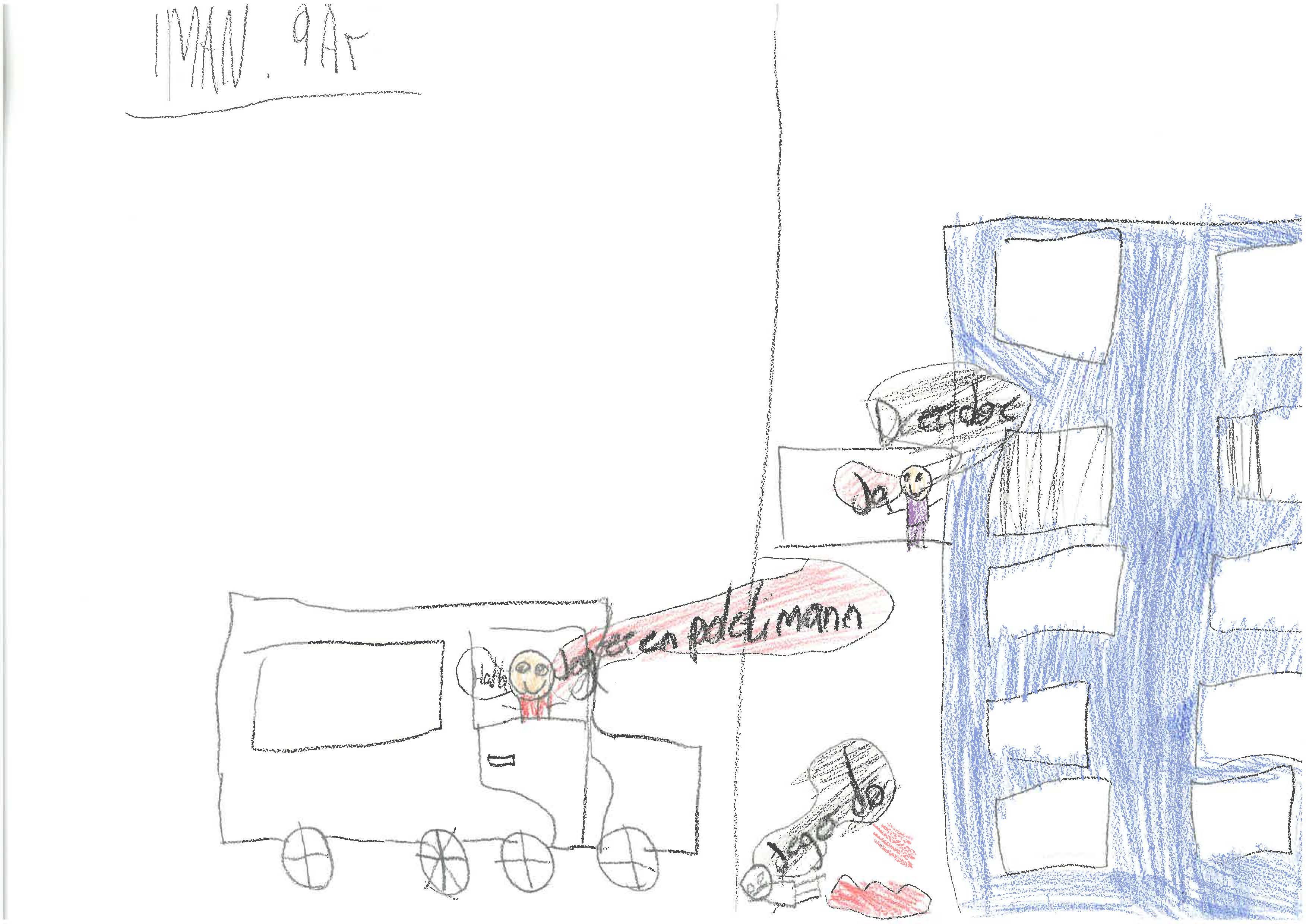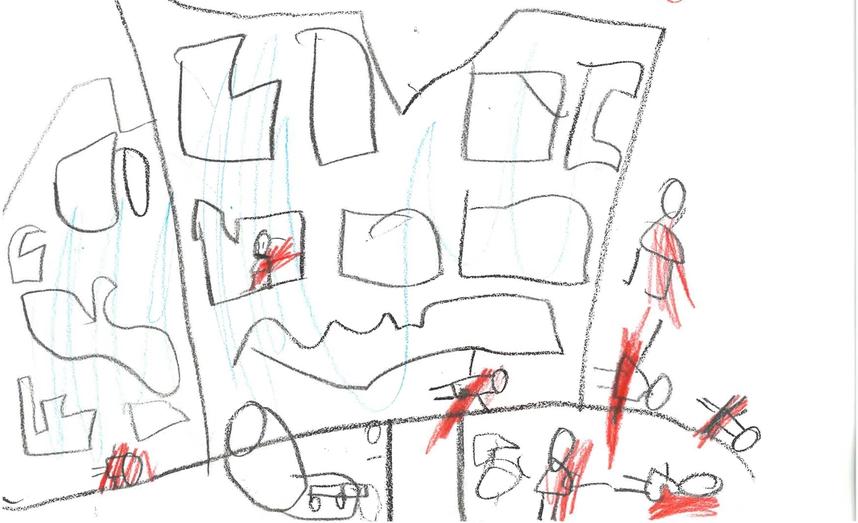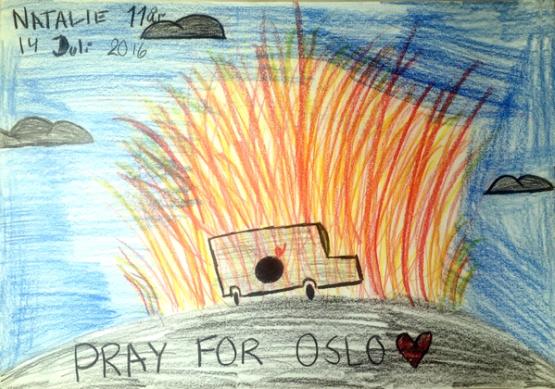The conversation should begin by establishing what the child already knows about the subject and where they have acquired this information. Their prior knowledge will form the basis of the conversation. Some details may need to be corrected while others must be nuanced or further elaborated. Explain what happened, the motivation for the attack and how society reacted. Spend time reassuring the child by telling them that they are safe and that terrorist attacks are extremely rare in Norway.
How to talk to children about the 22 July terror attacks
Here you will find advice and suggestions on how to talk to children about the terrorist attacks on 22 July. The conversation should allow room for questions and give children the emotional security to express their feelings. It is important that children are provided with appropriate words to express themselves. Questions should be answered concretely and with specific facts.

There was once a man called Anders Behring Breivik. He didn’t agree with the people who governed Norway and he was very angry with them. He didn’t want people from other countries to come and live in Norway, and he didn’t want girls to go to school, or women to go to work either. He wanted to change the way we live. Instead of explaining this in words, he used violence. That’s why we call him a terrorist.
First he let off a bomb near the offices of those governing Norway. He had hidden the bomb in a van. He didn’t agree with how they governed the country so he wanted to scare them, and hurt and kill them. When the bomb went off, many people were killed and injured.
It’s not only adults who are interested in how a country is governed – a lot of young people and children are also interested and involved. So after parking the van with the bomb, he travelled to an island called Utøya, where many young people were attending a summer camp. He took along weapons and fired them at people on the island. He did it because he thought that when they grew up, they would govern the country in the same way as the people he disagreed with. Many of them were killed and injured, and everyone became really terrified.
A lot of people in Norway felt sad and frightened. All over the country, people took part in rose parades and laid flowers to show their love for everyone who had lost their loved ones and for all the survivors of the attack.
The terrorist was sent to jail, and was given a very long prison sentence, maybe lasting his whole life. Terrorist attacks have not occurred many times in Norway, so when this happened, those who govern Norway had to discuss what we could do to make sure that this kind of thing never happens again.

Use the wording recommended for 4-6-year-olds but be prepared for questions about what the terrorist disagreed with. See the following example of how to describe this:
The terrorist parked the van with the bomb near where the politicians and the prime minister worked. This is called the Government Quarter. In 2011, the Labour Party governed the country. The terrorist felt that
it was all the fault of the Labour Party that we had several cultures and religions in Norway. So he wanted to injure and kill those who governed Norway in order to put a stop to immigration among other things. The terrorist did not like the idea of mixing cultures and he feared that other cultures and religions could replace and take over the Norwegian culture. He saw only the negative aspects of people from different cultures living together. He wanted strict laws controlling people and limiting their freedom to live as they wanted. For example, he didn’t want women to be able to study and work because he believed it would destroy society.

Depending on prior knowledge, consider whether to use the explanation recommended for the 6–10 age group or whether the description given below is more suitable:
Terrorism means that persons or groups use violence to draw attention to their opinions and objectives or to demand something from those in government, or because they want to try to seize power. A terrorist wants to frighten people so that they cannot live a free life. This was what Anders Behring Breivik wanted to achieve when he attacked the Government Quarter and the island of Utøya on 22 July 2011.
Breivik believed that immigrants, and particularly Muslims who immigrate to Europe, had a plan to take over Europe and Norway and introduce strict religious rules. He was afraid of Islam as a religion because he believed that all Muslims are terrorists, or that they are preparing to take over Europe. We can describe such prejudices as Islamophobia.
Breivik held the view that politicians who admit immigrants into the country – and Muslims in particular – help to destroy society and that they have a secret plan to do this so that they themselves can benefit. He attacked the Labour Party and its youth party, the Workers Youth League, because he believed that of all the political parties in Norway, they were chiefly responsible for paving the way for immigration. He thought that by attacking them, he could stop immigration.
The terrorist spoke to many others who shared this way of thinking or ideology, and they communicated on different websites. He picked up a lot of new ideas on the internet, and a number of people confirmed his views and supported his hatred of the Labour Party, immigrants and Muslims.
Breivik gave several reasons for the attack. In addition to being anti-Islamic he was also anti-democratic. This means that in his opinion, the way Norway was governed and the fact that we have a democracy were wrong. He was also an anti-feminist because his view was that gender equality and equal rights between women and men represented a threat to society.
